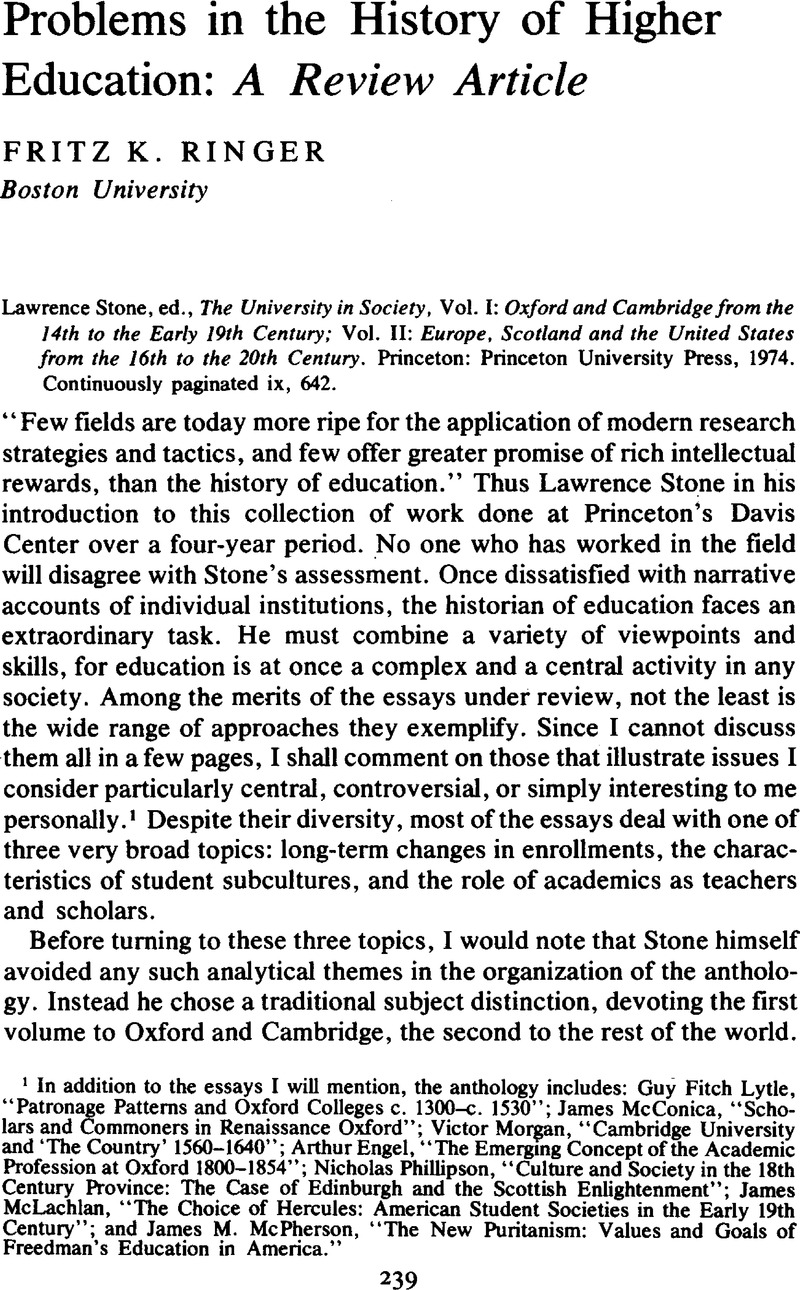No CrossRef data available.
Published online by Cambridge University Press: 03 June 2009

1 In addition to the essays I will mention, the anthology includes: Guy Fitch Lytle, “Patronage Patterns and Oxford Colleges c. 1300-c. 1530”; James McConica, “Scholars and Commoners in Renaissance Oxford”; Victor Morgan, ‘Cambridge University and “The Country’ 1560–1640”; Arthur Engel, “The Emerging Concept of the Academic Profession at Oxford 1800–1854”; Nicholas Phillipson, “Culture and Society in the 18th Century Province: The Case of Edinburgh and the Scottish Enlightenment”; James McLachlan, “The Choice of Hercules: American Student Societies in the Early 19th Century”; and James M. McPherson, “The New Puritanism: Values and Goals of Freedman's Education in America.”
2 For Germany the clearest pattern is a rapid decline in absolute total enrollments during the later eighteenth century: Eulenburg, Franz, Die Frequent der deutschen Universitdten von ihrer Gründung bis zur Gegenwart (Leipzig: Teubner, 1904).Google Scholar For France, see Palmer, R. R., “Free Secondary Education in France before and after the Revolution,” History of Education Quarterly (Winter 1974), pp. 437–52,Google Scholar and Frijhoff, Willem and Julia, Dominique, Ecole et société dans la France d'ancien régime (Paris: Colin, 1975). Stone notes that Kagan is working on French and Italian data for the early modern period.Google Scholar
3 Very helpful, though in need of some correction, is the model proposed by Boudon, Raymond, Education, Opportunity, and Social Inequality: Changing Prospects in Western Society (New York: Wiley, 1973).Google Scholar
4 The basic evidence was first presented in the classical studies of Johannes Conrad. I have reviewed it in connection with a comparative study on Education and Society in Modern Europe, forthcoming.
5 Pfetsch, Frank R., Zur Entwicklung der Wissenschaftspolitik in Deutschland 1750 bis 1914 (Berlin: Duncker & Humblot, 1974).Google Scholar
6 O'Boyle, Lenore, “The Problem of an Excess of Educated Men in Western Europe, 1800–1850,” Journal of Modern History, vol. 42 (1970), pp. 471–95. The “excess” may have been peculiar to Germany.CrossRefGoogle Scholar
7 “Secondary” schools were apparently cutting into “university” (arts) enrollments not only in Germany, but also in Spain and perhaps in France. This raises some problems in the interpretation of the enrollment changes of the early modern period.